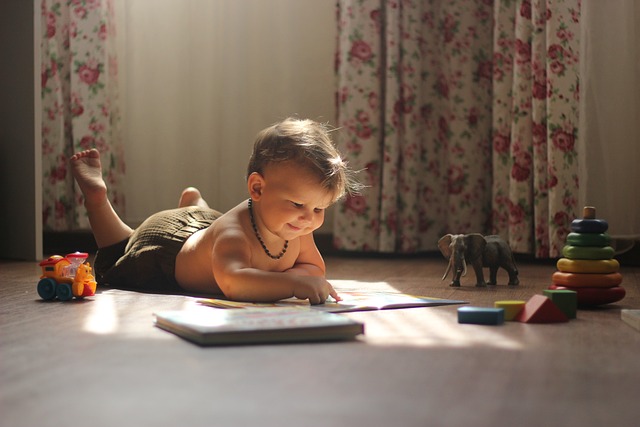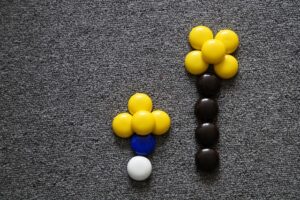
Image Source: FreeImages
Physical activity is essential for the healthy growth and development of children. It not only helps them maintain a healthy body weight but also promotes strong bones, muscles, and joints. Regular exercise also contributes to improved mental and behavioral health, boosting self-esteem and reducing anxiety and tension. As parents, it’s crucial to encourage and engage children in fun physical activities that they enjoy. In this article, we will explore a variety of exercises and games suitable for children of different age groups, from toddlers to preschoolers and grade school kids. So, let’s get started and promote physical activity in our children!
Physical Activities for Toddlers (Ages 2-4)
Toddlers are naturally active and full of energy. Engaging them in physical activities not only helps them burn off excess energy but also promotes their motor skills development. Here are some fun exercises and games for toddlers:
1. Animal Walks
Encourage your little ones to imitate various animal movements such as crawling like a bear, hopping like a rabbit, or waddling like a penguin. Animal walks are not only fun but also help improve coordination and balance.
2. Obstacle Course
Create a simple obstacle course using pillows, cushions, and furniture. Guide your toddler through the course, encouraging them to crawl under, climb over, and jump off the obstacles. This activity promotes gross motor skills and spatial awareness.
3. Dance Party
Put on some lively music and have a dance party with your toddler. Move and groove together, encouraging them to copy your dance moves. Dancing helps improve coordination, rhythm, and flexibility.
4. Balloon Volleyball
Blow up a balloon and play a gentle game of volleyball with your toddler. Use a soft balloon and encourage them to hit the balloon back and forth over a designated line. This activity enhances hand-eye coordination and gross motor skills.
5. Simon Says
Play a game of Simon Says with your toddler, giving simple directions such as “Simon says touch your nose” or “Simon says hop on one foot.” This game helps improve listening skills and body awareness.
Physical Activities for Preschoolers (Ages 3-5)
Preschoolers are becoming more coordinated and can engage in more complex physical activities. It’s important to provide them with opportunities for both structured and unstructured play. Here are some exciting exercises and games for preschoolers:
1. Scavenger Hunt
Create a scavenger hunt by hiding objects around the house or backyard and providing clues for your preschooler to find them. This activity promotes problem-solving skills, physical movement, and cognitive development.
2. Balance Beam
Set up a makeshift balance beam using tape on the floor or a wooden plank. Encourage your preschooler to walk along the beam, practicing balance and coordination. Start with a straight line and gradually introduce curves and zig-zags to make it more challenging.
3. Freeze Dance
Play some energetic music and have a freeze dance session with your preschooler. When the music plays, they can dance freely, but when it stops, they need to freeze in their current position. This game helps improve listening skills and body control.
4. Follow the Leader
Take turns being the leader and have your preschooler follow your movements. Incorporate various actions like hopping, skipping, jumping, and stretching. This game enhances gross motor skills, coordination, and body awareness.
5. Soccer Dribbling
Set up a small indoor or outdoor area and give your preschooler a soft ball. Encourage them to dribble the ball using their feet, practicing control and coordination. This activity introduces basic soccer skills and promotes physical fitness.
Physical Activities for Grade School Kids (Ages 5-12)
As children enter grade school, they become more capable of participating in organized sports and activities. It’s important to provide them with a variety of physical activities to keep them engaged and active. Here are some enjoyable exercises and games for grade school kids:
1. Bike Riding
Teach your child how to ride a bicycle and go for regular bike rides together. Cycling is an excellent cardiovascular exercise that strengthens leg muscles and improves balance and coordination.
2. Jump Rope
Introduce your child to the classic activity of jump rope. Provide them with a suitable-sized rope and teach them different jump rope techniques like basic jumps, single leg jumps, and criss-cross jumps. Jumping rope improves cardiovascular fitness and coordination.
3. Team Sports
Enroll your child in team sports like soccer, basketball, or softball. Team sports not only promote physical fitness but also teach valuable lessons in teamwork, cooperation, and sportsmanship.
4. Martial Arts
Consider enrolling your child in martial arts classes like karate, taekwondo, or judo. Martial arts provide a structured environment for physical activity while teaching discipline, focus, and self-defense skills.
5. Outdoor Games
Encourage your child to engage in classic outdoor games like tag, hide-and-seek, or capture the flag with friends and neighbors. These games promote social interaction, physical fitness, and imaginative play.
Tips for Encouraging Physical Activity in Children
Here are some general tips to help you encourage physical activity in children of all ages:
- Be a Role Model: Children are more likely to be physically active if they see their parents engaging in exercise and enjoying physical activities. Lead by example and make physical activity a family affair.
- Limit Screen Time: Set limits on screen time, including TV, video games, and smartphones. Encourage children to spend their free time engaging in physical activities rather than being sedentary.
- Make It Fun: Choose activities and games that your child enjoys. Fun and enjoyment are key factors in ensuring children remain motivated and engaged in physical activity.
- Provide a Variety of Activities: Introduce your child to a wide range of physical activities to prevent boredom and encourage them to explore different interests. This variety helps develop a well-rounded fitness foundation.
- Set Realistic Goals: Set age-appropriate goals and challenges for your child. Celebrate their achievements and progress, no matter how small. This positive reinforcement helps build confidence and a positive attitude towards physical activity.
- Encourage Outdoor Play: Provide ample opportunities for outdoor play, whether it’s in your backyard, neighborhood park, or local playground. Outdoor play allows children to engage in unstructured physical activity and explore their surroundings.
- Incorporate Physical Activity into Daily Routines: Find ways to incorporate physical activity into your child’s daily routines. Encourage them to walk or bike to school, take the stairs instead of the elevator, or help with household chores that involve physical movement.
- Stay Active as a Family: Plan regular family activities that involve physical activity, such as hiking, biking, or playing sports together. This not only promotes physical fitness but also strengthens family bonds.
Remember, the key to promoting physical activity in children is to make it enjoyable, age-appropriate, and a regular part of their daily routine. By encouraging and engaging children in physical activities from an early age, we can instill lifelong habits of health and fitness. So, let’s get moving and have fun as a family!
Additional Information: It’s important to ensure that children have access to safe and suitable environments for physical activity. Always supervise them during physical activities, provide appropriate safety equipment, and choose age-appropriate equipment and play areas.




